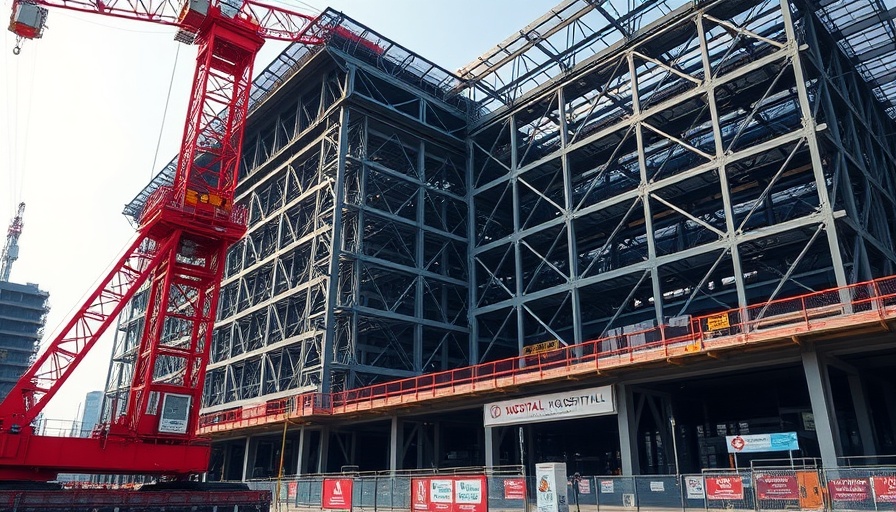
Revolutionizing Steel Erection: Suffolk's Innovative Solution
In the fast-paced world of construction, tracking the progress of structural steel erection is not merely about keeping tabs on the materials; it's about ensuring the integrity of the entire project. Imagine embarking on a construction journey only for an incorrectly placed beam to jeopardize everything. This is why Suffolk Construction, a Boston-based contractor, has pioneered an innovative solution known as Live Dimensions.
What Is Live Dimensions?
Live Dimensions is a cutting-edge software developed in-house by Suffolk's Director of Digital Engineering, Denis Leff. The tool leverages Building Information Modeling (BIM) technology to monitor steel erection from design to completion. Penned in the digital age, this software enables contractors and project managers to avoid common pitfalls that can occur during steel erection, ultimately saving time and cost overruns. According to Leff, identifying potential errors early in the erection process is essential for maintaining project timelines and budgets.
The Tech Behind the Magic
So, how does Live Dimensions work? The software utilizes artificial intelligence (AI) to standardize data across various stakeholders, creating a cohesive data narrative that updates dynamically with real-time progress. This means that project members no longer sift through cumbersome Excel spreadsheets; instead, they have instant access to live updates reflecting the project's current status of structural steel. While many construction firms still rely on outdated methods, Suffolk's commitment to technology is paving the way for more streamlined processes in the industry.
Why It Matters to Homeowners and Contractors
For homeowners engaging in renovation projects, understanding the construction process becomes vital, especially when structural elements are involved. An accurate tracking system like Live Dimensions not only holds contractors accountable but also ensures that the homeowner is kept in the loop. This transparency promotes trust and confidence throughout the project.
A Glimpse into the Future of Construction
The future looks bright for construction technologies, especially as the industry gradually embraces digital solutions. Suffolk's innovative approach could inspire other firms to rethink their processes. With technology advancing exponentially, the construction realm must keep up. Predictive analytics, seen in tools like Live Dimensions, will likely become a gold standard, helping to foresee risks before they materialize.
Common Misconceptions About BIM and Construction Tech
One of the most common misconceptions about BIM and digital tools is that they are only for large firms or those with extensive tech knowledge. Denis Leff's vision of democratizing BIM demonstrates that such tools can be accessible to smaller firms and non-experts. By teaching stakeholders how to effectively leverage these technologies, the industry can experience growth and improvement across the board.
How Contractors Can Get Started with Live Dimensions
For contractors wanting to incorporate technology like Live Dimensions into their workflows, the first step is to recognize the value of data and reporting. Embracing digital tools means not just investing in software but also investing time in training staff. By cultivating a tech-savvy workforce, companies can improve accuracy, foster collaboration, and increase efficiency in project delivery.
Conclusion: Embracing Change in Construction
The construction industry is at a crucial point of transformation, and adopting innovative technologies like Suffolk's Live Dimensions marks a significant step forward. For contractors, leveraging these advancements can lead to enhanced project outcomes and stronger industry reputations. For homeowners, greater transparency assures not just progress but quality as well. As construction evolves, those willing to adapt will drive the industry toward a more efficient and reliable future.
 Add Row
Add Row  Add
Add 




Write A Comment